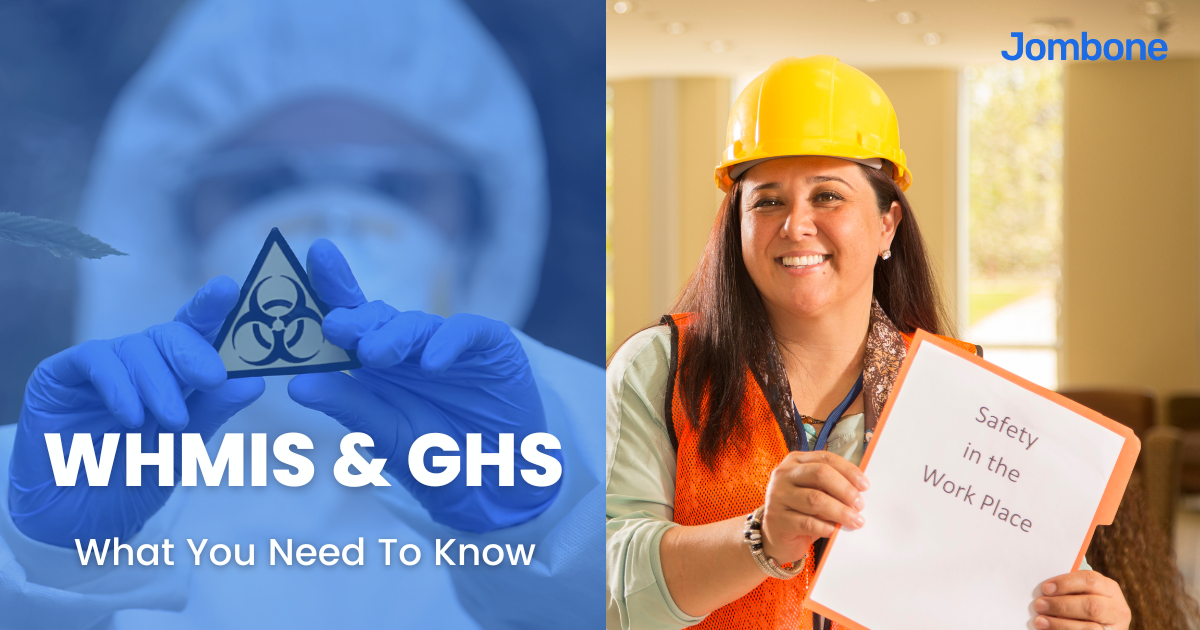What is WHMIS? Why is it important?
Workplace safety is a top priority for employers and employees alike, and one of the key aspects of maintaining a safe work environment is understanding and adhering to the Workplace Hazardous Materials Information System (WHMIS). WHMIS stands for Workplace Hazardous Materials Information System and provides information about hazardous materials for workers. It is a Canada-wide system, and everyone has the right to know about the products they work with.
Every day, people get injured at work from using hazardous chemicals. WHMIS training teaches you how to use these chemicals and stay safe at work safely. Every year, three times more deaths are caused by chemical exposure than by traumatic injuries. Many people must take time off work due to occupational health and work-related diseases such as asthma and skin dermatitis.
How can chemicals affect you?
Hazardous chemicals can impact you in many ways; some might have immediate reactions, while others might take some time to show their impact. Some effects include burns, rashes, blindness, difficulty breathing, cancer, damage to the brain and internal organs, and some might eventually result in death.
Hazardous materials at your work
There are many hazardous materials you might have seen at your work. Some examples include acids and alkalis such as drain cleaner, gasoline, silica, bleach used for disinfecting and cleaning, and paints and adhesives used in manufacturing.
Health terms
These basic occupational health and safety terms will help you better understand the WHMIS labels and safety data sheets:
- Acute health effects are caused by a short-term exposure that has an intense effect.
- Chronic implies a prolonged or long-term effect that is usually caused by exposure to small amounts over a long period of time.
- A latent period is the time between a person’s first exposure and when they get sick.
Routes of entry
A chemical can enter your body in four ways:
- Inhaling the chemical
- Ingesting or eating the chemical
- Absorbing the chemical through the skin
- Injecting it through a cut on your skin
How to protect yourself from hazards
In order to protect ourselves from the hazards around us, we must recognize the hazards, assess the hazard class and the risk, control the hazards, and evaluate the effectiveness of the hazard controls. We can recognize and assess hazards using WHMIS 2015 labels and safety data sheets. WHMIS also provides suggestions on how to control these hazards.
How to control chemical hazards
Chemical hazards are best controlled by eliminating them from the workplace or by using a safer alternative. Other less effective methods are engineering the hazards out, implementing administrative procedures, and educating employees about health hazards. Personal protective equipment should be used to control hazards as a last resort.
The WHMIS legislation
The WHMIS 2015 provides information about hazardous materials for workers. It is a Canada-wide system and applies to all workplaces in Canada. Everyone has the right to know about the hazardous products regulations they work with. The provincial workplace health and safety organizations enforce it.
The WHMIS 2015 is harmonized to GHS
WHMIS 2015 is now a globally harmonized system, to GHS, which stands for Global Harmonized System of classification & labeling of chemicals. This makes trade in the United States and many other countries much easier.
How does WHMIS 2015 work?
Everyone has the right to know about the chemicals they use at work, and this can be learned using labels, safety data sheets, and training. For example, labels help you recognize hazardous products, safety data sheets provide more information on the recognition and assessment of environmental hazards used, and training teaches you how to read labels and safety data sheets.
WHMIS 2015 labels
There are two main types of labels:
Supplier label: An employer must ensure that all hazardous products in the workplace are properly labeled. All products must have supplier labels in English and French. Supplier labels must include the following information: product identifier, signal words, pictograms, hazard statement, and precautionary statements.
Workplace label: Workplace labels are required when a hazardous product is produced in the workplace or decanted from a labeled container into another and might not be used immediately or left unattended. A workplace label is also required when the original supplier label is removed or damaged. Workplace labels must include the following three points: product identifier, safe handling instructions, and reference to SDS. Hazard pictograms are optional to include.
WHMIS 2015 Safety Data Sheets
“Safety data sheet and sheets provide detailed information about the hazardous product. It teaches you how to protect yourself and how to handle the product safely. It must be available to workers in paper or electronic format. You have the right to know about the chemical you work with.
Safety data sheets have 16 detailed sections of information, some of which might be difficult to understand unless you are specifically trained. But some important sections are 2, 4, 7, 8, and 15.
WHMIS 2015 training requirements
Education and training on WHMIS are required for workers who are exposed or are likely to be exposed to a hazardous product due to physical hazards in their work activities. This may include workers, supervisors, or managers who handle hazardous products, or someone who is involved in emergency response.
On-site training
Today we covered the educational part of WHMIS training, but you also need to be trained about specific workplace procedures.
we all must ensure:
- All hazardous products have labels and safety data sheets.
- Safety data sheets are up-to-date and accessible. They do not expire after three years like Material Safety Data Sheets.
- Workers’ training should be up to date. You should be familiar with any new hazardous products and updated procedures.
Stay safe at work!

